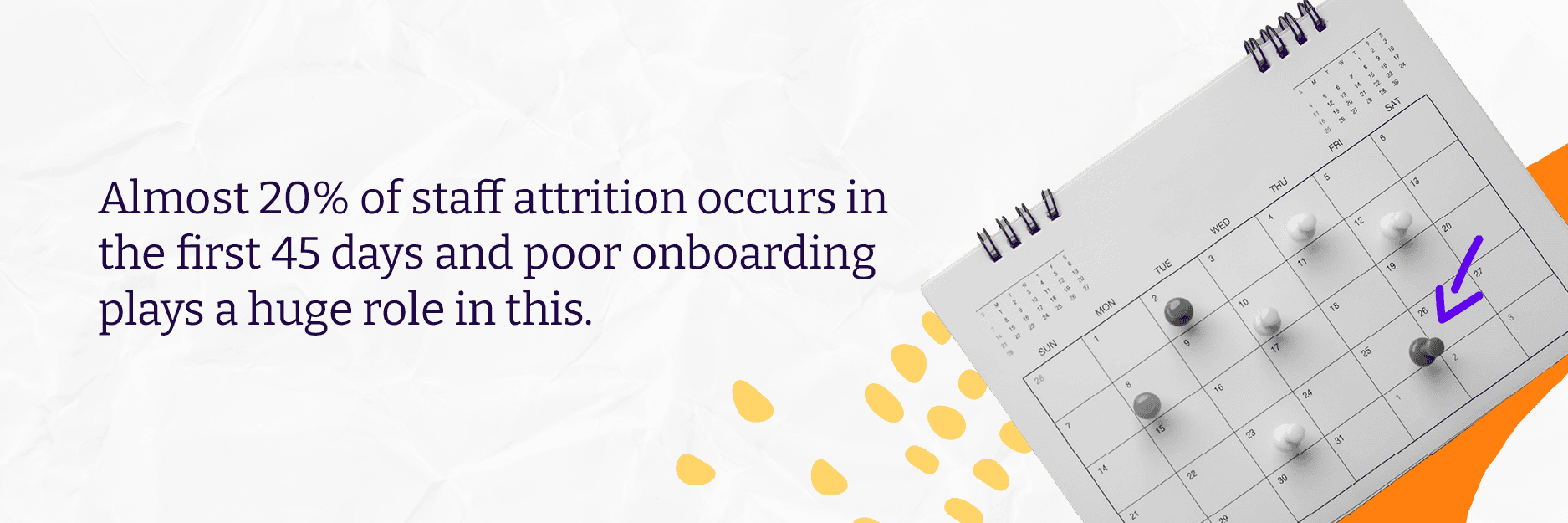Imprintable Moments: What They Are & How To Get Them Right

Gillian French
Employee Experience Officer
23 Aug 2022

Positive imprintable moments like onboarding and returning to work are the key to making a lasting impression on your employees.
It was Rose Fitzgerald Kennedy who said, “life isn’t a matter of milestones, but of moments”. Is it time we applied this same philosophy to our work?
Employee experience is on the brink of becoming a buzzword, but we can’t let that dictate how crucial it really is. It’s one of the most important parts of healthy working life and 92% of HR leaders agree that it’s a top priority.

In trying to capture the best employee experience possible at their companies, executives have embraced things like autonomy, rewards and recognition, learning and development, and purpose and meaning. And this is all super important.
But the difference we make in any or all of these areas hinges on how we handle key or ‘imprintable’ moments. If we don’t look after these correctly, it can take a long time for a company to recover from the negative cultural impacts.
What are imprintable moments and why do they matter?
Before we move on to how to handle imprintable moments, let’s take a look at what they are. Imprintable moments are generally the times at which an employee needs their organization to support them. In a lot of cases, the employee will be feeling vulnerable and so how their employer treats them during this time will have a lasting impact.
During the first season of our Employee Experience Podcast here at Workvivo, I spoke to Leslie Caputo of behavioral change company Humu. She shared an example with me that shines some light on these critical moments.
“Imagine when you first join a company, the experience if you’re sitting there and you don’t have access to the right technology and you’re wondering, ‘what am I even doing here?’,” she said.

“If that onboarding during the first couple of days goes wrong, that’s an imprintable moment. It really sticks with you and lasts and changes your perspective of how you perceive and experience your organization.
“But if that experience goes incredibly smoothly, that can really set things off on the right foot.”
As well as onboarding, other imprintable moments that most of us experience in our careers include getting our first performance review in a new job, transitioning to a managerial role for the first time, and coming back to work after an extended period of leave.
“Here at Humu, we’re hypothesizing that this sort of return to the office in the wake of the pandemic that we’ve been in for the last two years is another pretty key imprintable moment,” Leslie said.
With the return to the office and other imprintable moments, leaders need to identify where these moments lie for their employees and build a plan around them.
“What’s great about recognizing and identifying what those moments are is that you can then craft interventions around them,” Leslie said. Sticking with her example of onboarding, she explained that most companies instinctively try to slow down the process for new employees.
“And actually the research shows that that’s not the right thing to do. The best thing is to give them an early win. Give them something that’s high impact but reasonable for a new hire and let them test that out.
“And so same goes for this return to the office. We should be thinking about how can we manufacture or design experiences around returning to work to make it feel better, so you don’t come into this half-empty office and have that negative experience.”
How to get imprintable moments right (and wrong)
How can you ensure that those imprintable moments provide positive experiences for your employees?
A well-thought-out onboarding process is a must. Map out an onboarding strategy and then make sure to review it constantly so that it’s in line with best practice and also with your company values.
Everyone in your organization needs to understand the importance of onboarding – particularly people managers. Senior leaders should do regular check-ins with new starters to ask them about their onboarding experience.
Overall, the process should be mostly automated but human connection is key to its success.

A neglected onboarding process has resounding impacts. Almost 20% of staff attrition occurs in the first 45 days and poor onboarding plays a huge role in this. High turnover of new starters can badly dent your recruitment budget, but it also leaves your teams short-staffed and can do reputational damage via social media or word of mouth.
To help get imprintable moments right, here’s an example of how they can go very wrong. Over the years I’ve heard such terrible stories of employees returning to work after maternity leave and having nobody there to welcome them back.
Their locker was thrown out with their personal belongings, their fob or key no longer worked to get into the office, and their direct manager had been changed twice when they were away so they were unsure who they were reporting to.
It took a week and a half for them to get settled in and it left a very poor impression on them. They left three months later.
Again, these are important moments in which we are typically feeling vulnerable. We’re relying on our organizations to step up and if they don’t, it breaks the trust we have in them and leaves a negative imprint.
‘Why would I bother?’
Dublin City University’s (DCU) business school published a research report highlighting the importance of getting the return to work after maternity leave right. It’s about re-engaging talent, they say; particularly during a “key transition point which can derail the careers” of women.
The report highlights how managing this imprintable moment poorly can leave a bad impression on an employee – one that’s hard to shake and negatively impacts a business’s bottom line.
The following quote is from an interview with a woman who had returned to work in the pharmaceuticals and healthcare industry.
“For me, everything had changed, and I didn’t have anybody to talk to about that and I found that very, very, very difficult because in my headspace, I was like, “Is nobody going to ask me how I feel since I came back?” …I think it is important that there is an avenue for you to turn down to talk to somebody who will pay heed …I feel that you are very alone around here …There is a bit of bitterness there and I just feel, “Well, why would I bother?”…And it’s sad because it’s a company that I actually, like, I am here ten years and I have worked really hard. I have proven myself.”
In a situation like this, showing a person that you care makes all the difference. DCU’s report says: “A positive experience of the return to work was often preceded by a signal from the organization or the line manager that the employee concerned was valued.
“This was so impactful for employees that some line managers (not the recent returner) even reflected on how this had been influential in their own previous experiences.”
A one-size-fits-all won’t cut it
How supportive are managers when people need to adjust their schedules or take time off for their children or elderly parents?
I have heard horror stories of people needing time off to care for their uncle who had raised them as their father had died when they were younger and being told they couldn’t as it didn’t fit with company policy. I have also heard of companies giving people two weeks off when their cat died.
You see, humanity always has to come into it. Not all policies will fit all people and no two situations will be the same. But leaders and organizations need to be acutely aware if one of their employees needs support or is feeling vulnerable.
It’s a win-win for both as an employee who feels supported will be loyal and engaged, which in turn will benefit the business and its customers. As your workforce becomes highly engaged and satisfied, results will start to show up in the bottom line. According to a study by Gallup, having a highly engaged workforce leads to 20% higher sales and 21% higher profitability.

The exit: saying goodbye gracefully
Finally, an employee’s exit from the company is a critical imprintable moment that most organizations get wrong. Their mindset is often that “the employee has moved on and so will we”.
I have seen leaders become very petty and not treat people with respect. They seem to think that they are getting ‘one up’ on the person or teaching them a lesson. This attitude generally involves an ego!
It is so important to get the exit right and treat the employee with the respect they deserve. Firstly, because it’s an imprintable moment that they will remember and associate with their journey within the organization. It’s likely to muddy any positive view they had of the organization if the exit is handled poorly.
Also, their colleagues will be looking on and if a person is treated disrespectfully or doesn’t get the appreciation they deserve on exit, other employees will become wary of the organization and may see its culture as disingenuous.

If done well, along with other imprintable moments, you will have a loyal brand ambassador out in the market singing your praises.
More than just a number
“I’ve learned that people will forget what you said, people will forget what you did, but people will never forget how you made them feel” – Maya Angelou.
Organizations invest time and money in hiring the right people and keeping them. They work on corporate events like Christmas and summer parties in an attempt to create imprintable moments. But like everything in life, the human need is quite simple: people would prefer to be valued and appreciated for their work and to feel like they’re more than just a number.
What it comes down to is being there for your employees when they need you most. Organizations are people and the sooner we start realizing that, the better workplaces will be for everyone.


